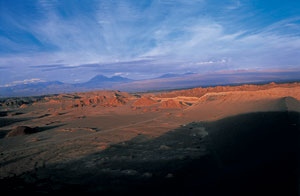World’s oldest mummies - Where?
When we think of famous mummies, our minds naturally turn to the legendary “Valley of the Kings” in Egypt, final resting place for the great Pharaohs and their queens. But where are the world’s oldest mummies? The answer: Chile!
Around 8,000 years ago, the little known fishing communities of the Chinchorro began mummifying their dead in a sophisticated process that belies their otherwise primitive ways. Without the signature elaborate pottery, jewellery or textiles so common in the grander Inca, Mayan and Toltec civilisations, these humble folk desiccated their deceased relatives in an elaborate process before burial in family “plots”.
Celebrated Egyptologist, Dr Joann Fletcher, describes this most unusual ritual; “The Chinchorro began to ‘rebuild’ their dead, with bodies carefully defleshed and the skin, brain and internal organs removed. The bones were dried with hot ashes before the whole lot was then reassembled using twigs for reinforcement bound tightly with reeds. Over this framework the skin was reapplied, and supplemented where needed with sea lion or pelican skin. A thick layer of ash paste was applied over the body and a stylised clay mask used to cover the face, painted with either black manganese or red ochre to give the mummies a rather clone-like, uniform appearance.”
Our knowledge of the great Egyptian funerary processes has been common for hundreds of years and the vast Cairo Museum is stocked to the rafters with all their gilded trappings. Yet our understanding of the modest Chinchorro is less than one hundred years old.
From the first mysterious fragments found near Arica and described by archaeologist Max Hule in 1917, our understanding has progressed very slowly.
Then, in 1983, bulldozers unearthed a cache of almost one hundred Chinchorro mummies near El Morro, on the border with Peru, in what must have been a major graveyard for these ancient, pre-Colombian folk. Archaeologists and anthropologists now swarm over the coastal desert plains of northern Chile in their quest for more clues and relics. Since then, the El Morro mummies and others scattered along the Pacific coastline from Ilo, Peru, in the north to Chile’s Loa River in the south, a 200-mile stretch, have painted an increasingly complex portrait of Chinchorro life - and death.
The oldest mummies, perhaps 9,000 years old, were simply wrapped in animal skins and naturally dried in the hot arid air. The process evolved through the black and then red periods as described by Dr Fletcher, finally disappearing altogether about 4,000 years ago.
Perhaps the most famous and evocative of these mummies is the “Chinchorro boy”. One can only imagine the tender process of preparing the infant’s remains for the solemn burial ceremony. About 7,000 years ago the artisan removed the child’s organs, including the flesh, then stiffened the skeleton with sticks and reconstructed joints with bits of rope. A tiny body was rebuilt of dried grass, animal hair and paste, then the child’s skin was replaced and its face gently refashioned with closed eyes, a button nose and round mouth.
Finally, the artist painted a thin layer of a metallic chemical, black manganese, over the body, completing what scientists now know as one of the most remarkable mummies in the world.
A fascinating display of these antiquities can be found in the Museum San Miguel de Azapa in Arica.

